The Persian New Year celebration, known as Nowruz, begins this year on Monday, March 21. Here is how Iranians celebrate the 13-day long holiday, and why the rite is still so popular after 3,000 years.
March 21, 2022, may not mean much to most people in the world, but it is a very special day for people in Iran, and a few other countries, as well. It’s the start of a 13-day long, 3000-year tradition called Nowruz, and I’m going to tell you what this ancient tradition is all about and why it is so dear to so many Iranian people and other ethnic groups in the world.
In technical terms, Nowruz is the day of the vernal equinox and marks the beginning of spring in the Northern Hemisphere. More accurately, the exactly calculated moment the Sun crosses the celestial equator and equalizes night and day is marked as the first day of Nowruz in the Iranian calendar, and that is why, unlike Christmas, Nowruz is celebrated at different times of the day or night, with families gathered to observe the rituals together.
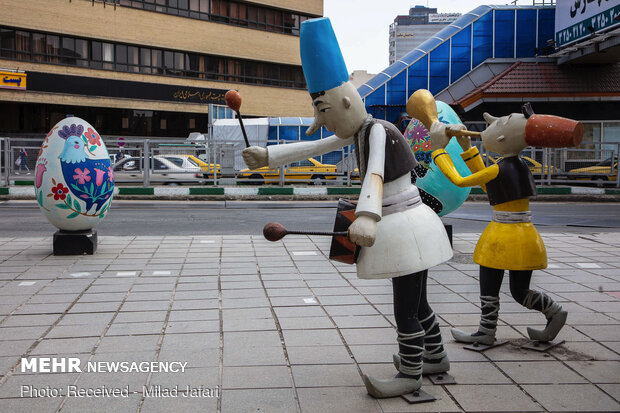 Nowruz symbols in Karaj, Alborz Province, Iran
Nowruz symbols in Karaj, Alborz Province, Iran
There is this interesting superstition about Nowruz, which some people believe either in seriousness or in jest, that you have to be at your best at the time of Sal Tahvil; otherwise, you will be having an unlucky time throughout the year.
There is no question that Nowruz holds a special place in the heart and memory of many Iranian people. And the wonderful thing about the Iranian New Year is that it is not celebrated only in Iran. Many countries along the Silk Road, such as Afghanistan, Tajikistan, Azerbaijan, and Turkey, celebrate Nowruz, and the rite is not exclusive to one culture or religion. It has the advantage of being so ancient and having not only survived but actually flourished well into the 21st century, that it is only logical for Nowruz to be so comprehensive, diverse, and all-around a happy, unifying occasion with all its variations and different traditions and customs.
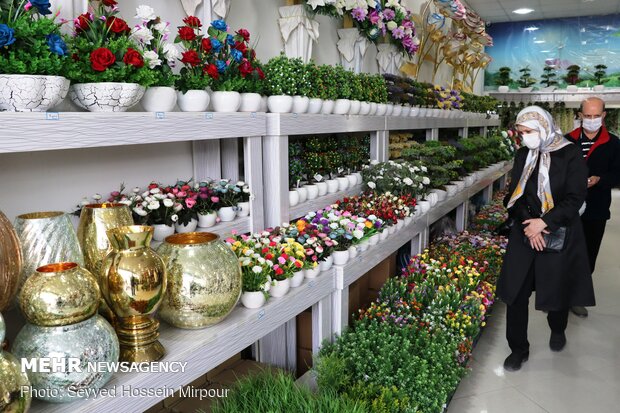 Buying spring flowers is a Nowruz tradition in Iran
Buying spring flowers is a Nowruz tradition in Iran
Another interesting, and very common, Nowruz superstition is actually tied to the Chinese zodiac tradition of assigning an animal to each year in a twelve-year cycle. This year, which is 1401 on the Iranian calendar, is the Year of the Tiger.
Outside superstition, Nowruz is actually a UNESCO Intangible Cultural Heritage of Humanity, first inscribed on the list in 2009 through the initiative of Iran and joint cooperation of Azerbaijan, India, Kyrgyzstan, Pakistan, Turkey, and Uzbekistan. The case was later extended in 2016 to include five more countries - Afghanistan, Iraq, Kazakhstan, Tajikistan, and Turkmenistan.
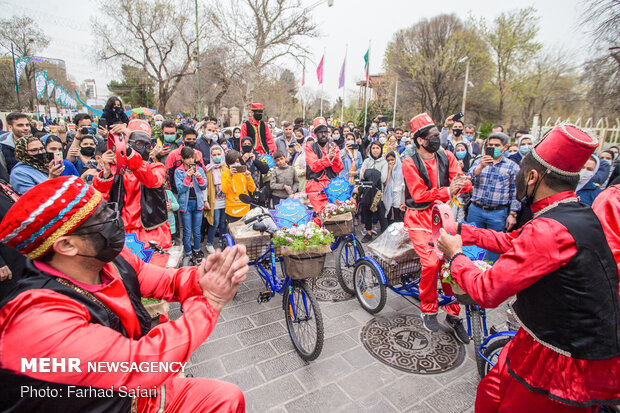 ‘Hajji Firuz’, fictional character in Iranian folklore, carnival in Qazvin
‘Hajji Firuz’, fictional character in Iranian folklore, carnival in Qazvin
The UN's General Assembly recognized the International Day of Nowruz in 2010, describing it as a Spring festival of Iranian origin. On 15 March 2010, the US House of Representatives passed the Nowruz Resolution by a 384–2 vote, "Recognizing the cultural and historical significance of Nowruz…”
With an impressive number of over 187 million people in nearly a dozen countries observing Nowruz as a national holiday, the occasion is indeed a true cultural heritage to the world. But what does the celebration mainly include in Iran? Well, here are some of the most popular traditions:
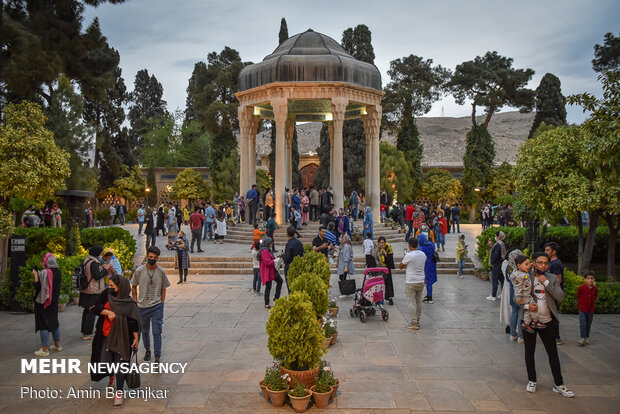 People traditionally flock to Tomb of Hafez in Shiraz to celebrate the New Year.
People traditionally flock to Tomb of Hafez in Shiraz to celebrate the New Year.
Housecleaning, done a few days before spring. The activity sometimes becomes monstrous, and every child’s nightmare, as it involves all members of the family to engage in vigorous activity to give a thorough scrub to the whole household, giving the walls a fresh paint, washing every piece of carpet and curtain in the house (which, if you have ever been to an Iranian home, it’s a lot!), and even buying new furniture or placing the old one in new arrangements around the house. Although the practice is not fun, it is a vital and unavoidable part of New Year's preparations.
Chaharshanbe Suri, which falls on the eve of the last Wednesday of the year, and includes jumping over bonfires while singing ‘My sickly yellow paleness is yours; your fiery red color is mine.’ In the metropolis of Tehran, there will be lots of fireworks instead.
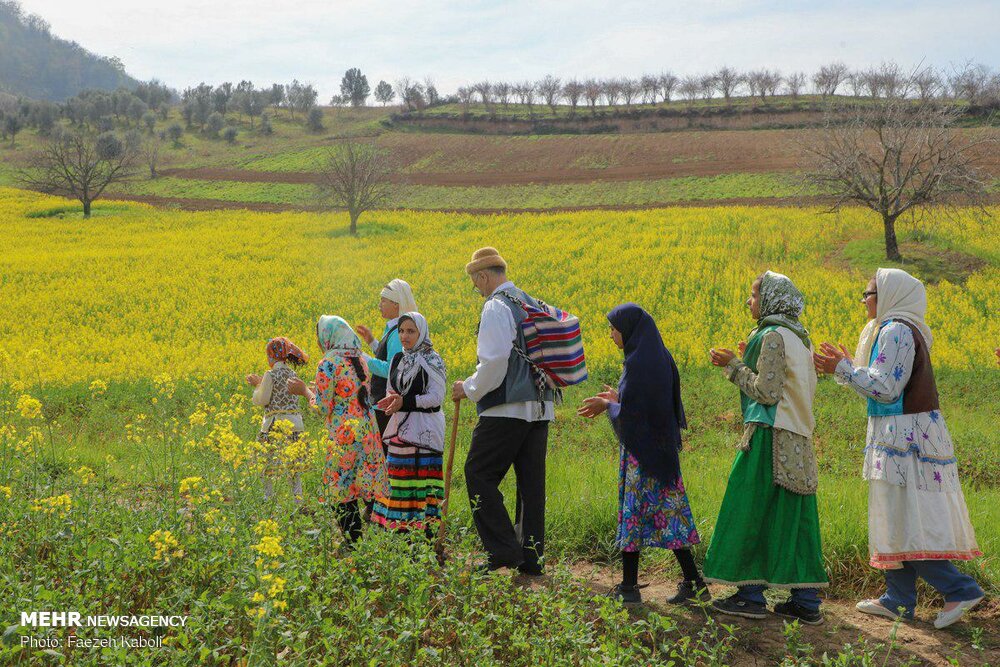 People in villages in Golestan province embrace the New Year by spending time in beautiful nature
People in villages in Golestan province embrace the New Year by spending time in beautiful nature
Going to the cemetery on the last Thursday of the old year to remember the ones who have passed away, and are no longer with us to celebrate the coming year. People usually put hyacinths or sabzeh (sprouts, which are planted especially as a Nowruz decoration) on the tombs of their loved ones.
New Year shopping, where you hop from one shop to another to get yourself a nice, new outfit to wear for the entirety of the 13-day long holidays. Most of the time, it’s a last-minute thing where you have to assemble an acceptable outfit in just a few hours, shouldering your way through a large crowd at various shopping malls. Although with the pandemic, many Iranians took to online shopping and will probably continue the practice for Nowruz.
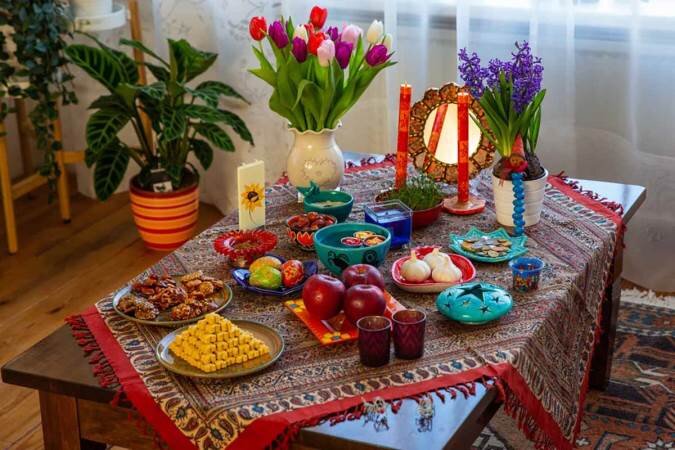 While the items are the same, each family designs its Haft-sin in a special way
While the items are the same, each family designs its Haft-sin in a special way
Haft-sin (The Seven S’s), a traditional table setting that symbolizes life, fertility, and love as a whole, and requires all members of the family to gather around the moment the new year begins. The Seven S’s are:
1. Seeb (apple); symbol of beauty and love
2. Seer (garlic); symbol of health
3. Serkeh (vinegar) symbol of progress and change
4. Somaq (sumac); symbol of patience
5. Samanu (sweet pudding); symbol of abundance
6. Sabzeh (sprouts); symbol of rebirth
7. Senjed (Persian olive) symbol of stability and strength
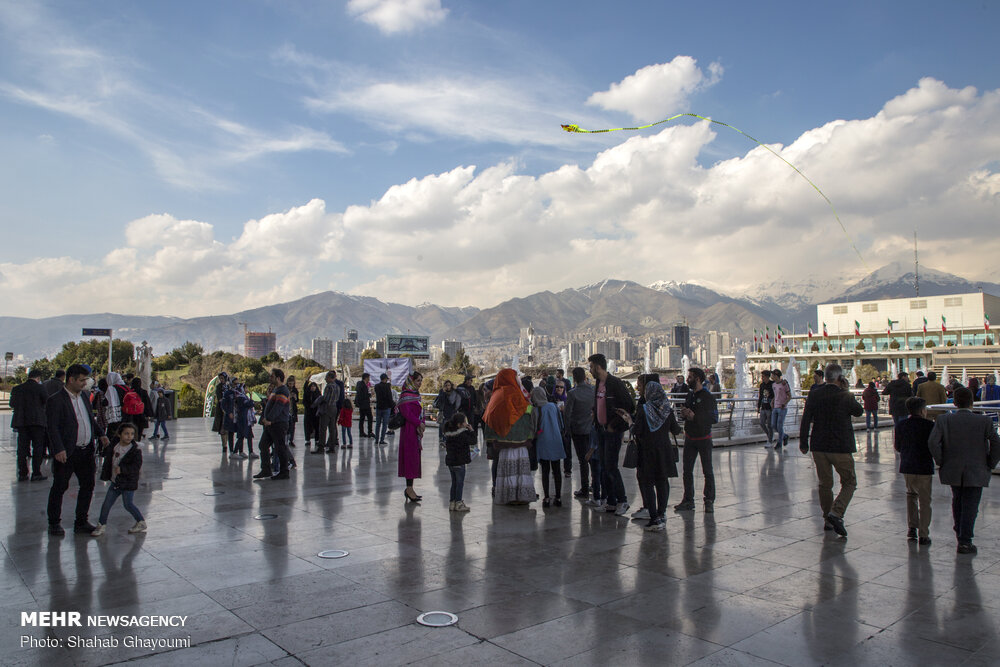 Tehran enjoying clean air during Nowruz
Tehran enjoying clean air during Nowruz
Eid Didani, or an intensive period of visiting your relatives. During Nowruz holidays, households are busy hosting relatives close and distant, with a wide variety of sweets and ajil (trail mix), baklava, nan berenji (cookies made from rice flour), exciting-looking confections, and generally everything your dietitian would be horrified to find out you have eaten. Last year, the pandemic put a damper on the whole Eid Didani practice, and it will most likely be the case this year, as well.
Eidi, which is the name given to the money the people you go to for ‘Eid Didadni’ give you as a gift. However, the tradition may have gone out of practice in some families, and adults are less eligible to receive eidi. Eidi usually has a spiritual worth, as opposed to a monetary one, so don’t be offended if the only thing you can buy with your eidi is just a sandwich.
Travelling, or a perfect excuse for ditching the whole ‘eid didani’ tradition. Some families would take the opportunity of the long holidays to visit other cities, or other countries if they can afford the atrocious travel costs. Of course, with the coronavirus pandemic still very much present, traveling to certain cities has been banned during Nowruz.
New Year Cuisine, which you can have at any other time of the year, of course, but which taste especially better during Nowruz. They include Ash-e reshteh (a noodle soup), Kuku sabzi (herbs and vegetable soufflé) served for dinner on New Year’s, Reshteh polow (rice cooked with noodles), Sabzi polow with fish, and dolma (cooked vegetables, meat and rice rolled in grape leaves).
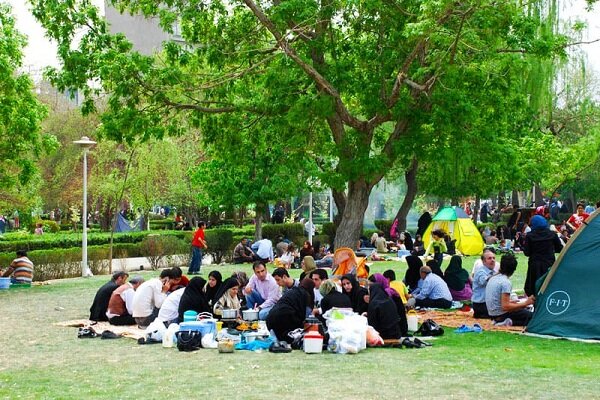 A typical Sizdah Be-dar outing in Tehran
A typical Sizdah Be-dar outing in Tehran
And last but definitely not least, Sizdah Be-dar, the last day of the Nowruz holidays, which falls on the 13th of Farvardin, and the number is considered to bring bad luck in Persian folklore. The idea of Sizdah Be-dar (literally, Thirteen Outdoor) is to spend time picnicking outdoors, and throwing away your Sabzeh because it is considered a bad omen to still have it when the Nowruz holidays are over.
By MEHR

 QR code
QR code